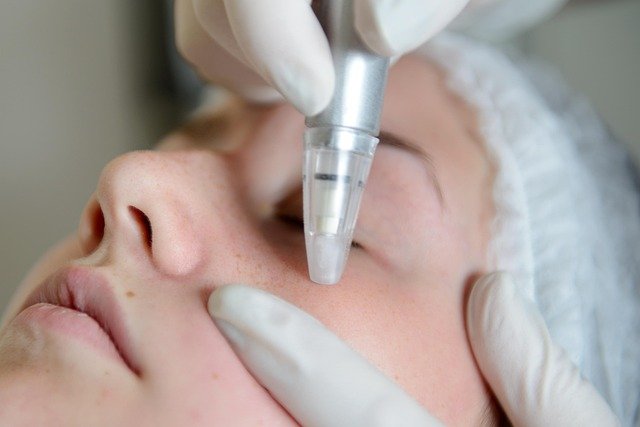The Science Behind Skin Rejuvenation: Restoring Youthful Radiance
Skin rejuvenation has become a popular topic in the world of dermatology and aesthetics, offering individuals the opportunity to revitalize their skin and achieve a more youthful appearance. This innovative approach to skincare combines various techniques and technologies to address common skin concerns, such as fine lines, wrinkles, uneven texture, and pigmentation issues. By understanding the science behind skin rejuvenation, we can better appreciate its potential benefits and make informed decisions about treatment options.

At its core, skin rejuvenation aims to kickstart the skin’s natural renewal processes. This is often achieved through controlled damage to the skin, which triggers the body’s healing response. As the skin repairs itself, it produces new collagen and elastin fibers, leading to improved texture, firmness, and overall skin quality.
What are the most common skin rejuvenation treatments available?
There are several effective skin rejuvenation treatments available, each with its unique approach and benefits:
-
Laser treatments: These utilize focused light energy to target specific skin concerns. Different types of lasers can address issues such as fine lines, pigmentation, and vascular lesions.
-
Chemical peels: This treatment involves applying a chemical solution to the skin, which causes controlled exfoliation and stimulates new skin growth.
-
Microdermabrasion: A minimally invasive procedure that uses tiny crystals to gently exfoliate the skin’s surface, promoting cell turnover and improving texture.
-
Microneedling: This technique creates microscopic punctures in the skin to stimulate collagen production and enhance product absorption.
-
Radiofrequency treatments: These use energy waves to heat the deeper layers of skin, promoting collagen production and skin tightening.
How do lasers contribute to skin rejuvenation?
Laser treatments have revolutionized the field of skin rejuvenation, offering precise and targeted solutions for various skin concerns. These treatments work by delivering concentrated light energy to specific areas of the skin, which is then absorbed by target structures such as pigment or blood vessels.
The heat generated by the laser stimulates collagen production and encourages cellular turnover. Different types of lasers can be used for various purposes:
-
Ablative lasers: These remove the outer layer of skin, promoting significant rejuvenation but requiring more downtime.
-
Non-ablative lasers: These target the deeper layers of skin without damaging the surface, resulting in less downtime but more gradual results.
-
Fractional lasers: These create microscopic treatment zones, allowing for faster healing and reduced side effects.
What should I expect during a skin rejuvenation treatment?
The experience of undergoing a skin rejuvenation treatment can vary depending on the specific procedure chosen. However, there are some general steps you can expect:
-
Consultation: A skincare professional will assess your skin and discuss your goals to determine the most appropriate treatment.
-
Preparation: Your skin may be cleansed and prepped before the procedure. Some treatments may require the application of a topical anesthetic.
-
Treatment: The duration and sensation of the treatment will depend on the specific procedure. Some may feel like a mild tingling, while others might be more intense.
-
Post-treatment care: Your clinician will provide instructions for caring for your skin after the treatment, which may include applying specific products or avoiding certain activities.
-
Follow-up: Depending on the treatment, you may need multiple sessions to achieve optimal results. Your provider will schedule follow-up appointments as necessary.
How long do the effects of skin rejuvenation last?
The longevity of skin rejuvenation results can vary depending on several factors, including the type of treatment, individual skin characteristics, and lifestyle habits. Generally, most treatments offer visible improvements that can last anywhere from several months to a year or more.
To maintain the results of skin rejuvenation treatments, it’s essential to follow a consistent skincare routine and protect your skin from sun damage. Many individuals choose to undergo periodic maintenance treatments to prolong the effects and continue improving their skin’s appearance over time.
Factors that can influence the duration of results include:
-
Age and skin condition
-
Sun exposure and lifestyle habits
-
Skincare routine and product use
-
Overall health and nutrition
By combining professional treatments with a dedicated at-home skincare regimen, individuals can maximize the benefits of skin rejuvenation and enjoy long-lasting improvements in their skin’s health and appearance.
In conclusion, skin rejuvenation offers a scientifically-backed approach to addressing various skin concerns and promoting overall skin health. With a range of treatment options available, from laser therapies to chemical peels, individuals can choose the most suitable method for their specific needs and goals. By understanding the science behind these treatments and working with skilled professionals, people can embark on a journey towards achieving healthier, more radiant skin.






